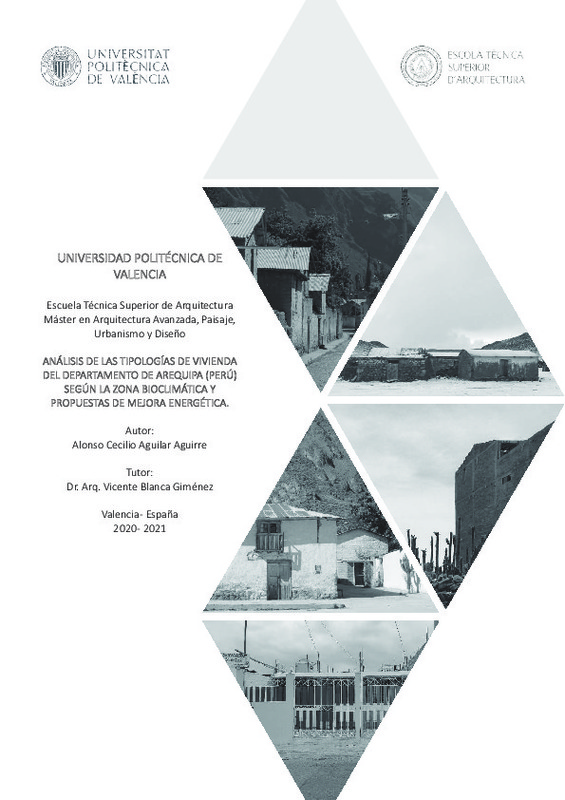JavaScript is disabled for your browser. Some features of this site may not work without it.
Buscar en RiuNet
Listar
Mi cuenta
Estadísticas
Ayuda RiuNet
Admin. UPV
Análisis de las tipologías de vivienda del departamento de Arequipa (Perú) Según la zona bioclimática y propuestas de mejora energética.GETICA
Mostrar el registro completo del ítem
Aguilar Aguirre, AC. (2021). Análisis de las tipologías de vivienda del departamento de Arequipa (Perú) Según la zona bioclimática y propuestas de mejora energética.GETICA. Universitat Politècnica de València. http://hdl.handle.net/10251/174852
Por favor, use este identificador para citar o enlazar este ítem: http://hdl.handle.net/10251/174852
Ficheros en el ítem
Metadatos del ítem
| Título: | Análisis de las tipologías de vivienda del departamento de Arequipa (Perú) Según la zona bioclimática y propuestas de mejora energética.GETICA | |||
| Autor: | Aguilar Aguirre, Alonso Cecilio | |||
| Director(es): | ||||
| Entidad UPV: |
|
|||
| Fecha acto/lectura: |
|
|||
| Resumen: |
[ES] El uso excesivo de la energía continúa en aumento agotando los recursos energéticos y provocando impactos negativos que contribuyen al cambio climático. Gran parte de las emisiones de CO2 y de la energía consumida en ...[+]
[EN] The excessive use of energy continues to increase, depleting energy resources and causing negative impacts that contribute to climate change. Much of the CO2 emissions and the energy consumed in the world are the ...[+]
|
|||
| Palabras clave: |
|
|||
| Derechos de uso: | Reserva de todos los derechos | |||
| Editorial: |
|
|||
| Titulación: |
|
|||
| Tipo: |
|
Localización
east=-72.01473013452487; north=-17.017809213705004; name=Aurelio La Puente 127, Mollendo 04416, Perú
recommendations
Este ítem aparece en la(s) siguiente(s) colección(ones)
-
ETSA - Trabajos académicos [4687]
Escuela Técnica Superior de Arquitectura







